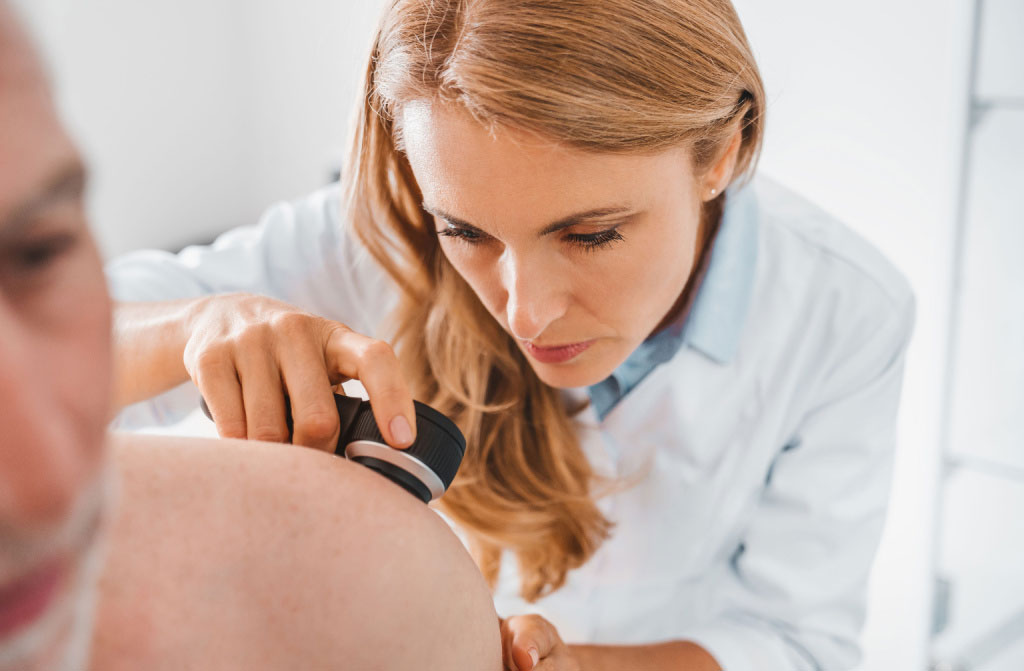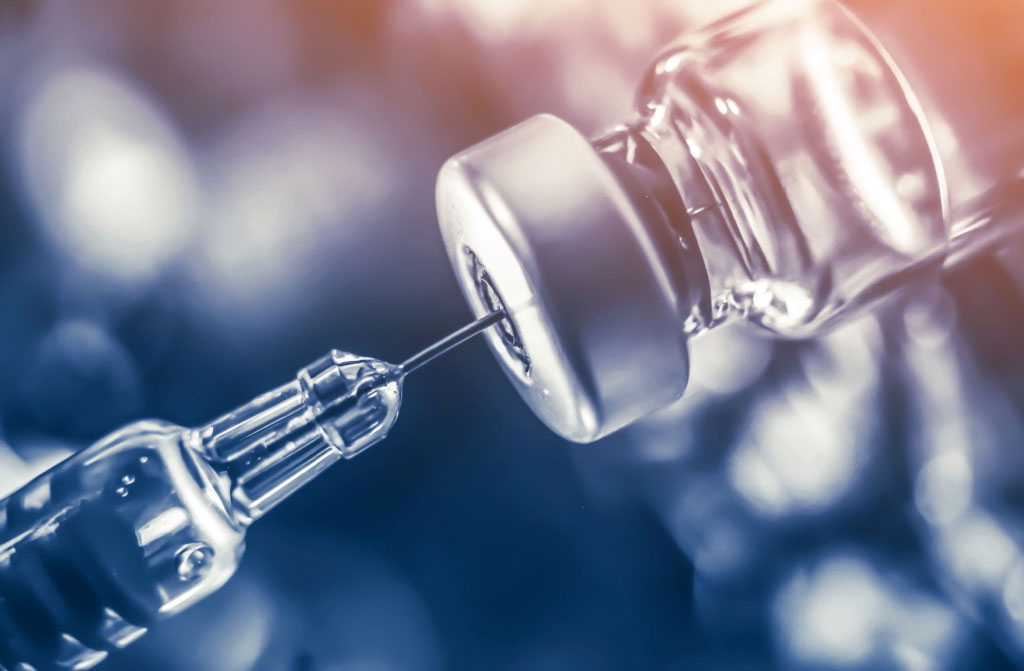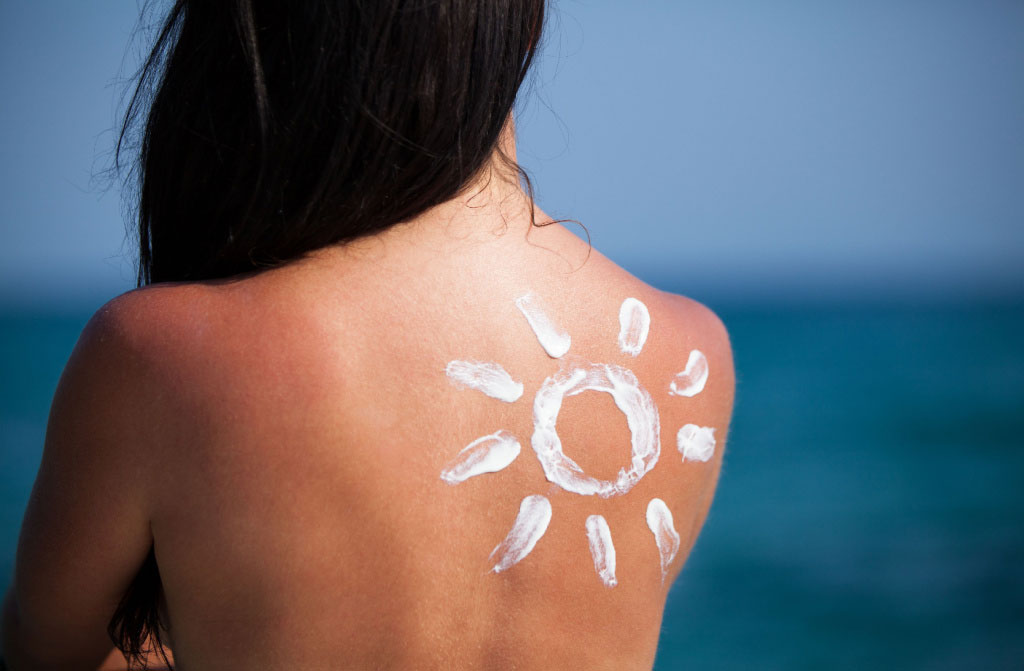One of the most common types of cancer worldwide is skin cancer. A group of skin cancers known as nonmelanoma skin cancers progresses slowly in the skin’s upper layers. Luckily, Moderna, the producer of the COVID-19 vaccine, has developed a vaccine that could potentially increase the survival rates in patients with this type of cancer. Check below and find out what skin cancer is and the risks of developing it. Learn how Moderna and Merck emerged with the most innovative treatment in medicine in the last decade and how you prevent it.
What is skin cancer?

In the United States, skin cancer is the most prevalent type. Sunlight is responsible for more than 90% of skin cancers. Skin cancers fall unto two categories: melanoma and nonmelanoma. The most prevalent type of skin cancer is nonmelanoma. All skin cells, except melanocytes, can cause nonmelanoma skin cancer.
Skin cancer can affect both light and dark pigmentations. More specifically, excessive exposure to the sun’s harmful ultraviolet rays is typically the cause of skin cancer, which is the abnormal growth of skin cells. Although most cases involve the most exposed skin, well-covered areas of the body, such as the palms or genital area, can also be affected.
Melanoma is almost always curable in its early stages, but if left untreated, it is likely to spread to other body parts. Melanoma is much more severe than squamous and basal cell skin cancers but occurs much less frequently. Both new cases of skin cancer and skin cancer related deaths are on the rise. Since 1973, the melanoma mortality rate has increased by 44%.
What are the causes and risk factors?
The sun’s ultraviolet radiation is responsible for the majority of basal cell and squamous cell skin cancers, but these cancers are also linked to other risk factors. The following factors can increase skin cancer risk.
Ultraviolet radiation
Skin cancer can be caused by too much exposure to ultraviolet light. The sun, tanning booths, and lamps are the primary sources of such radiation. Risk increases for people who choose to work outdoors during the day or spend a lot of their free time outdoors and are exposed to UV light. Using tanning beds raises a person’s risk of developing skin cancer.
Moles
Melanoma risk is increased by certain types of moles, including large ones. Although common moles are not cancerous, people with a lot of small or large moles are more likely to get melanoma. A mole’s progression to melanoma may be indicated by specific changes.
Race
Risk factors include fair skin, freckles, and reddish or blond hair. White people are much more likely to develop skin cancer than African Americans with darker skin tones. Nonwhite racial and ethnic groups have a lower incidence of skin cancer, but when they do occur, they tend to be diagnosed later and have a worse prognosis. Black people only had an average five-year survival rate of 67% for melanoma, compared to 92% for white people.
Chemical exposure
Nonmealona skin cancer is more likely to develop if exposed to a lot of arsenic, a heavy metal used to make some insecticides.
Skin cancer history
Those with a family history of skin cancer are more likely to get it. A person who has already been diagnosed with melanoma is more likely to develop another one. Skin cancers are more likely to occur in people with conditions like xeroderma pigmentosum, an inherited disease that impairs the skin’s ability to repair UV damage.
Age
More than half of all melanomas affect people over 50 years. As you get older, your risk of skin cancer probably increases because you’ve been exposed to more UV light. However, younger individuals who spend a lot of time in the sun may also develop skin cancer. Melanoma risk is increased by frequent sunburns, mainly when they occur in childhood.
Radiation
Radiation therapy expands the gamble of creating nonmelanoma skin malignant growth in the space that was dealt with.
Gender
Skin cancer is more common in men than in women. Men are about twice as likely as women to develop squamous cell carcinoma and three times as likely to develop basal cell carcinoma.
What are the symptoms?

Knowing the distinction between melanoma and an innocuous mole is significant. Melanoma can develop on the skin at any location. Most of the time, skin cancers don’t cause symptoms until they get large; they might get hurt or bleed. The ABCDE rule can assist in distinguishing between melanoma and normal moles. A mole may be a melanoma if it has the following characteristics:
- Asymmetry: One side of the mole doesn’t look the same as the other
- Border irregularity: The mole has ragged or notched edges
- Color: The mole doesn’t look the same everywhere. There may be tans, browns, blacks, and occasionally red, blue, or white patches.
- Diameter: The mole is more expansive than about ¼ of an inch.
- Evolution: Melanoma frequently alters physical characteristics like size, shape, or color. In contrast to most benign moles, melanoma can change over time. Keep an eye on any skin growths or moles you have for changes.
Nonmelanoma skin diseases are found on areas of skin prevented from the sun. Basal cell carcinomas typically manifest as small, raised, pink or red, translucent, shiny areas that may bleed after minor injuries or as flat, firm, pale areas. Large spots may be crusted or oozing. Squamous cell cancer can appear as flat, reddish patches that slowly grow or as growing lumps with a rough surface. If you notice any of the ABCDEs of melanoma, you should immediately see a dermatologist for an evaluation.
Is Moderna’s latest vaccine reliable?

Moderna’s stock took off Tuesday after the Coronavirus immunization creator itemized progress in fostering a preventive cure for a lethal type of skin disease. In a small study of patients with melanoma surgically removed, the company reported that a potential melanoma vaccine collaborating with the pharmaceutical giant Merck performed well. Falling off the outcome of its mRNA antibody for Coronavirus, Moderna declared that it accomplished empowering results when it turned its immunization innovation against malignant growth. The company said that a personalized cancer vaccine that Moderna developed with Merck and used mRNA genetic material from each patient’s tumors reduced the risk of recurrence or death by 44% in 157 people with stage three or four melanoma compared to standard care.
Due to its susceptibility to immune cell attack, melanoma was the first type of cancer for which it received approval. mRNA-4157/V940, the personalized cancer vaccine developed by Moderna, is derived from patient tissue samples. The company uses them to identify mutations in tumor cells. They are then used to create a vaccine that will provide a response specific to the patient’s cancer. The “adjuvant” setting of the combination trial was where patients had their tumors removed surgically and received treatment to prevent cancer from returning. Merck’s drug reduced the risk of death or recurrence by 43% compared to a placebo.
The companies will begin discussing the design of a Phase 3 trial with food and drug administration. This trial will likely need to be as large as the melanoma trial, which had 976 participants. In order to conceal which patients receive the Moderna vaccine, it may also need a placebo control. The results raised hope that Moderna’s personalized cancer vaccine strategy could build on the success of so-called checkpoint inhibitors developed by Merck, Bristol Myers, and other pharmaceutical companies to stop cancers from evading the immune attack. Keytruda has been approved for 17 additional types of cancer since its initial approval for melanoma, including some in which the tumor has a distinct mutational signature regardless of the organ in which it is located.
How can you prevent it?

Avoiding prolonged exposure to the sun and other sources of UV radiation is the most effective strategy for lowering the risk of developing skin cancer. Avoid spending a lot of time outside in direct sunlight, especially during the middle of the day, when UV rays are at their strongest.
Wear clothing that covers your skin, such as a shirt with long sleeves and a wide-brimmed hat.
Apply lip balm and sunscreen with at least a 15 SPF factory. Apply it twenty to thirty minutes before going outside so that it can be absorbed by your skin, and then reapply every two hours.
Wear goggles or sunglasses. The best protection is provided by sunglasses with at least 99% UV absorption.
Stay away from different wellsprings of UV light, like tanning beds and sunlight.
Learn how to shield your children from the sun. Individuals who experience extreme rankling burns from the sun, especially in adolescence or teen years, have an increased chance of melanoma.
Conclusion
Cancer is a disease that people have been struggling it for years. Scientists have been trying to find a cure to help people suffering from this disease and increase their chances of survival. Moderna’s approach clearly gives hope and a new vision in this direction. With their vaccine that offers a 44% chance of survival to patients that surgically removed the melanoma, they are on a path to reinventing medicine.
Meanwhile, to avoid the risks of developing this disease that has affected so many people over the years, apply the tips we gave you to prevent it and minimize the effects if you already have it. Remember to contact a doctor and get an appointment if you have concerns or notice any changes on your body.











